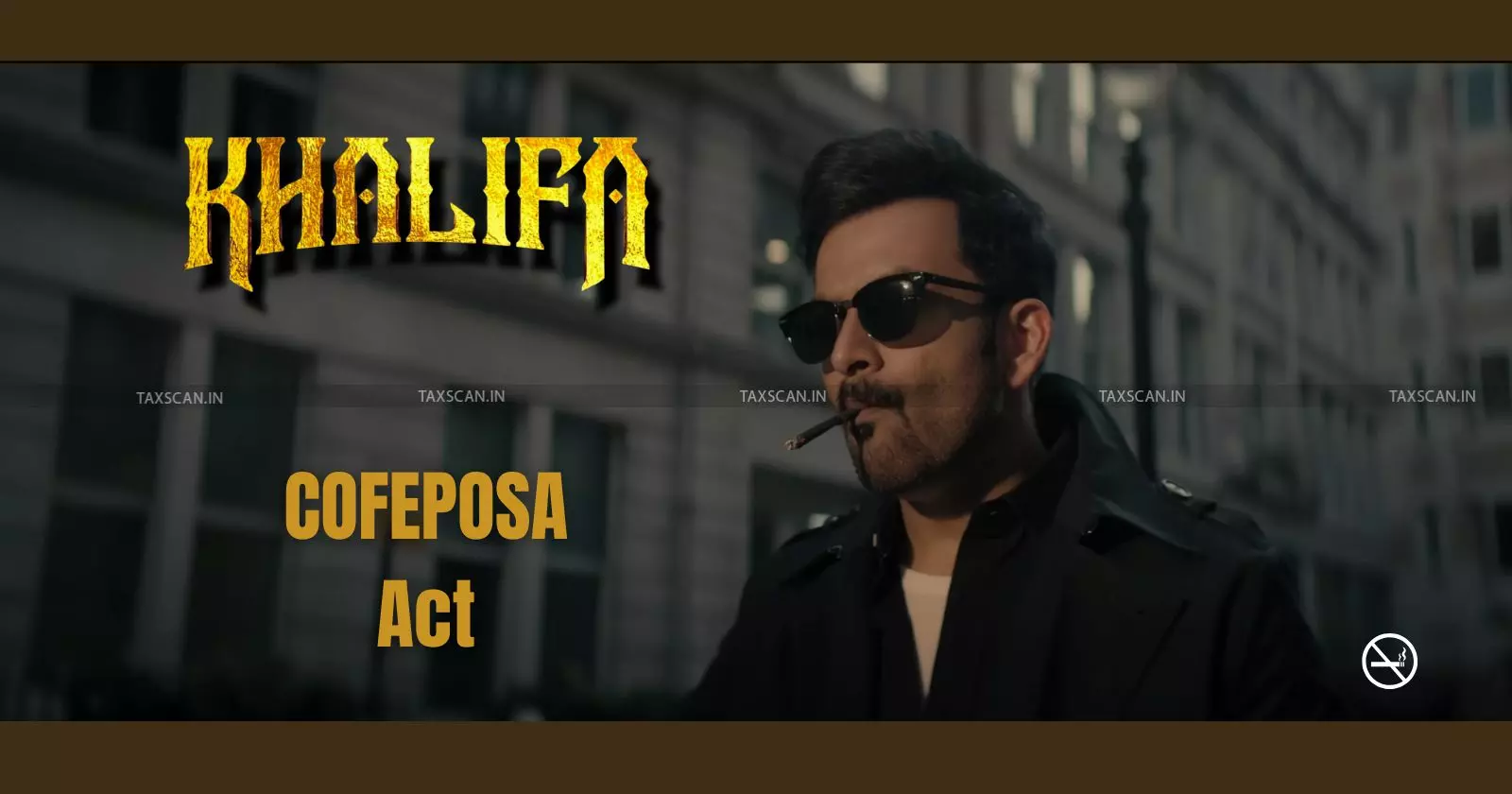What is COFEPOSA? Decoding the Anti-Smuggling & Forex Violation Law from Prithviraj’s ‘Khalifa’ Glimpse
The Anti-smuggling Law introduced in the late 1970s has recently captured the attention of movie-goers and the general public following its mention in the movie glimpse

A glimpse of Prithviraj Sukumaran-starrer Khalifa was dropped on October 16, 2025, in the event of the prolific industry veteran’s 43rd birthday. The Vysakh-directorial, written by Jinu V Abraham introduces viewers to the world of Aamir Ali, played by Prithviraj. The teaser has set social media ablaze with its stunning visuals by Jomon T John ISC, exceptional color-grading, thrilling action set pieces and a riveting score by Jakes Bejoy.
In case you haven’t watched it yet, take a look. https://www.youtube.com/watch?v=P3Lq_iFeYF0
The teaser hints at a plot surrounding gold-smuggling, with an interesting bit coming in the form of a reference to the COFEPOSA - abbreviated to the Conservation of Foreign Exchange and Prevention of Smuggling Activities Act, 1974.
So what exactly is the COFEPOSA and how does it add up to the plot of Khalifa?
Real to Reel
The teaser shows a Customs officer taunting an older detainee during interrogation, declaring that his protégé “Aamir is finished” and that the Customs would haul him straight to jail the moment he steps foot in India. The official smirks and adds, “That’s the best part of COFEPOSA.”
The interrogated man counters, “Do you know how COFEPOSA came to be in this country?” The man goes on to state that the Act came into being following the exploits of underworld crime kingpins Haji Mastan, Sukur Narayan Bakhia and Varadarajan Mudaliar and Mambaraykkal Ahmed Ali. While Mambaraykkal Ahmed Ali is fictional, the three names mentioned alongside him were towering figures in India’s smuggling history.
Indira Gandhi’s War
By the early 1970s, India’s economy was reeling under a severe foreign exchange crisis. Gold smuggling, hawala networks, and illicit imports had created a parallel economy that undermined state control. The government led by Prime Minister Indira Gandhi viewed the growing influence of smugglers not just as an economic problem, but as a threat to national sovereignty.
These were years when India’s import restrictions were rigid, its reserves fragile, and its rupee under pressure. As enforcement agencies like the Customs Department and Directorate of Revenue Intelligence (DRI) struggled to contain the menace, smugglers like Haji Mastan, Varadarajan Mudaliar and Sukur Narayan Bakhia had become household names with their arms extending into politics, business and cinema.
Indira Gandhi’s administration concluded that traditional criminal prosecution was too slow and often futile; accused smugglers easily obtained bail, tampered with evidence or carried on their operations from behind bars.
The Birth of the COFEPOSA
To break this cycle, the government sought a stronger law that could detain suspects preventively, without waiting for conviction, giving birth to one of the most controversial preventive detention laws in India - the COFEPOSA, which passed by Parliament in December that year.
The law gave the Central and State Governments power to detain individuals suspected of smuggling, dealing in illegal foreign exchange, or abetting such activities, for up to one year, which was extendable in cases deemed to threaten national interests.
The COFEPOSA wasn’t punitive in nature, it was preventive and was promulgated with the intent of stopping an offender before the next act could occur; this being the benefit the Customs Officer in Khalifa hinted at. Detention orders could be issued on subjective satisfaction of the authorities, and the burden of proof often rested on the detainee to challenge their confinement.
In the turbulent political climate of the 1970s, as the period of Emergency loomed, the state was tightening its grip over dissent and economic activity. The COFEPOSA thus became a symbol of the government’s uncompromising stance on smuggling and foreign exchange violations.
The Legal Framework of COFEPOSA
The COFEPOSA operates parallel to criminal law, thus preventive detention under COFEPOSA did not simultaneous prosecution under the Customs Act, 1962, the Foreign Exchange Management Act (FEMA) or other fiscal statutes.
Under Section 3 of COFEPOSA, both the Central and State Governments are authorised to order the preventive detention of any person suspected of engaging in, abetting, or financing smuggling activities or of acting in a manner prejudicial to the conservation of foreign exchange. The detention order may be issued on the “subjective satisfaction” of the competent authority.
A detained individual should be informed of the grounds for detention within five days (or fifteen in exceptional circumstances) and their case referred to an Advisory Board comprising sitting judges of a High Court, who review the legality and necessity of the detention. The opinion of the Advisory Board on the validity and requirements of detention is binding on the government.
Detractors criticise the wide discretion and limited scope of judicial review of the law, opening the door to misuse.
The Supreme Court and various High Courts have repeatedly upheld the validity of COFEPOSA, affirming that preventive detention, though harsh, is constitutionally permissible under Article 22, subject to procedural safeguards.
In landmark cases such as A. K. Roy v. Union of India (1982) , the Supreme Court clarified that while the subjective satisfaction of the detaining authority cannot be easily questioned, the detention will be struck down if there is non-application of mind, delay in communication of grounds to the detenue, or failure to place the case before the Advisory Board within prescribed time limits.
Ranya Rao Case
The COFEPOSA recently made headlines again when Kannada film actor Ranya Rao was apprehended in a major gold smuggling case at Kempegowda International Airport, Bengaluru. Rao was detained after Directorate of Revenue Intelligence (DRI) officials recovered 14.2 kilograms of gold worth ₹12.56 crore concealed on her person upon arrival from Dubai.
Although she was initially granted default bail in May 2025 after the DRI failed to file a chargesheet within the prescribed time, the Advisory Board under COFEPOSA upheld a preventive detention order against her, ruling that Rao would not be released for the duration of her one-year detention, effectively nullifiying the earlier bail.
50 Years On…
Since its enactment, the Conservation of Foreign Exchange and Prevention of Smuggling Activities Act, 1974 (COFEPOSA) has remained a controversial law in India’s legislature, at times praised as a shield against economic subversion, but criticised as an iron sword against personal liberty.
The law has often enabled detention based on suspicion rather than conviction and has repeatedly tested the boundaries between state security and constitutional freedom. Over the years, courts have tried to adequately ascribe principles of accountability into a statute designed for swift executive action, ensuring that the machinery of economic protection does not trample the principles of natural justice.
The presence of the COFEPOSA in Prithviraj Sukumaran’s Khalifa as a narrative trigger is yet another instance of bridging the gap between the real and the reel - a tale of fusing reality with alternate factual history linking the smuggling empires of the 1970s to the continuing allure of gold, power and enforcement in modern India.
Through the story of Aamir Ali, a smuggler’s grandson caught between legacy and law, Khalifa, set to release during Onam 2026 reminds audiences that COFEPOSA is not just a relic of Indira Gandhi’s economic policy - it remains a living law, invoked in headlines, debated in courts, and reimagined in cinema.
Support our journalism by subscribing to Taxscan premium. Follow us on Telegram for quick updates





